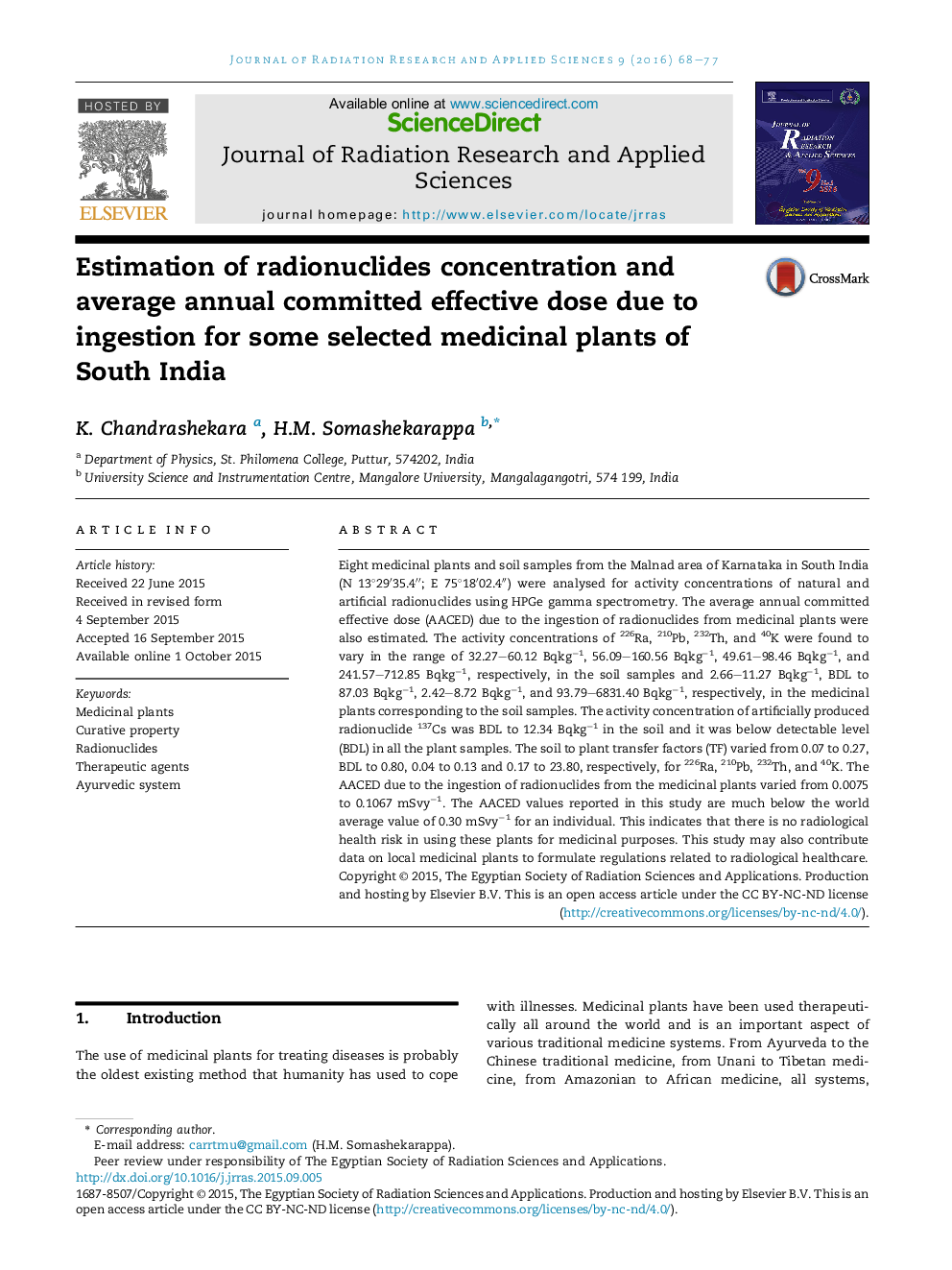| Article ID | Journal | Published Year | Pages | File Type |
|---|---|---|---|---|
| 1570399 | Journal of Radiation Research and Applied Sciences | 2016 | 10 Pages |
Eight medicinal plants and soil samples from the Malnad area of Karnataka in South India (N 13°29′35.4″; E 75°18′02.4″) were analysed for activity concentrations of natural and artificial radionuclides using HPGe gamma spectrometry. The average annual committed effective dose (AACED) due to the ingestion of radionuclides from medicinal plants were also estimated. The activity concentrations of 226Ra, 210Pb, 232Th, and 40K were found to vary in the range of 32.27–60.12 Bqkg−1, 56.09–160.56 Bqkg−1, 49.61–98.46 Bqkg−1, and 241.57–712.85 Bqkg−1, respectively, in the soil samples and 2.66–11.27 Bqkg−1, BDL to 87.03 Bqkg−1, 2.42–8.72 Bqkg−1, and 93.79–6831.40 Bqkg−1, respectively, in the medicinal plants corresponding to the soil samples. The activity concentration of artificially produced radionuclide 137Cs was BDL to 12.34 Bqkg−1 in the soil and it was below detectable level (BDL) in all the plant samples. The soil to plant transfer factors (TF) varied from 0.07 to 0.27, BDL to 0.80, 0.04 to 0.13 and 0.17 to 23.80, respectively, for 226Ra, 210Pb, 232Th, and 40K. The AACED due to the ingestion of radionuclides from the medicinal plants varied from 0.0075 to 0.1067 mSvy−1. The AACED values reported in this study are much below the world average value of 0.30 mSvy−1 for an individual. This indicates that there is no radiological health risk in using these plants for medicinal purposes. This study may also contribute data on local medicinal plants to formulate regulations related to radiological healthcare.
